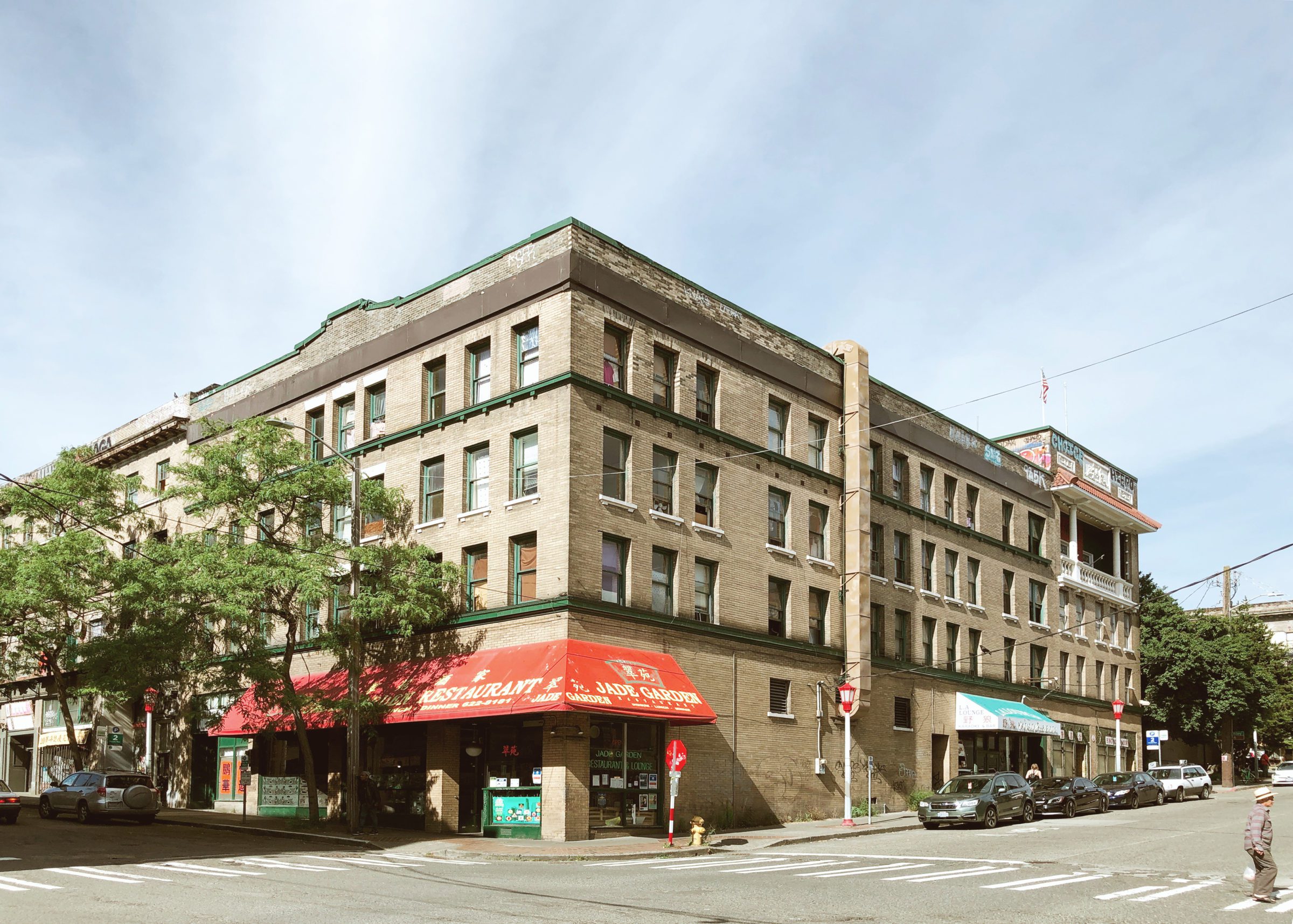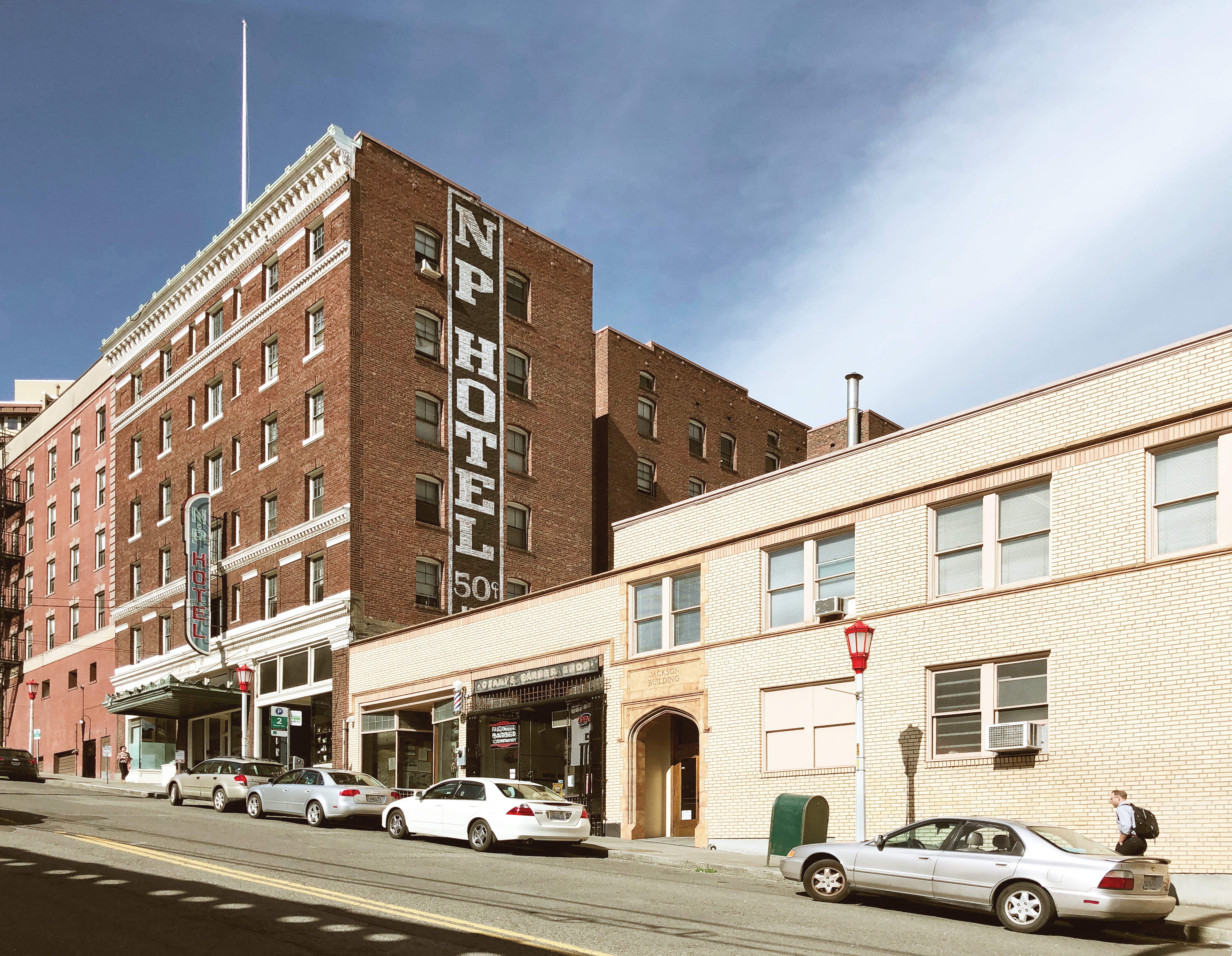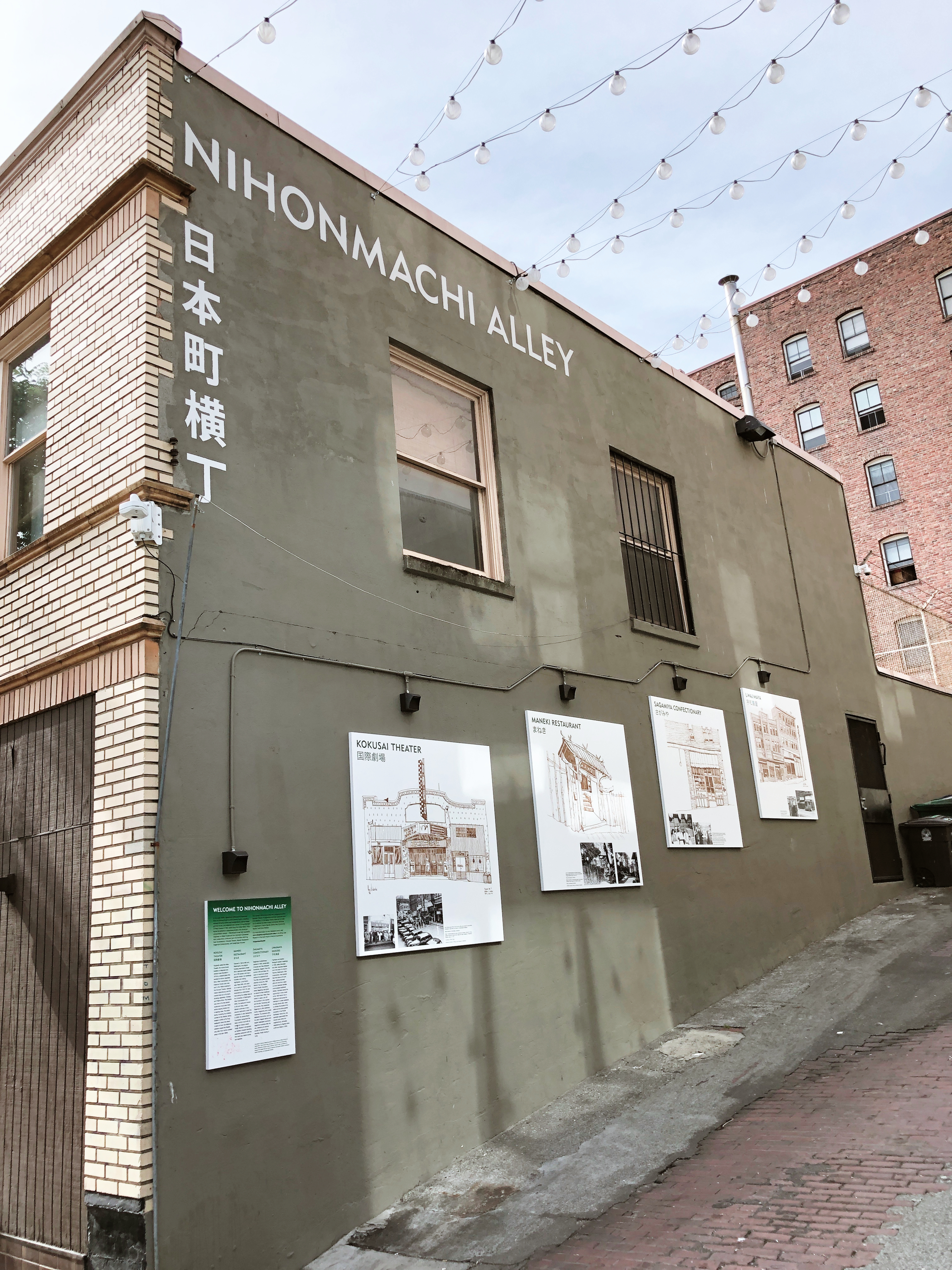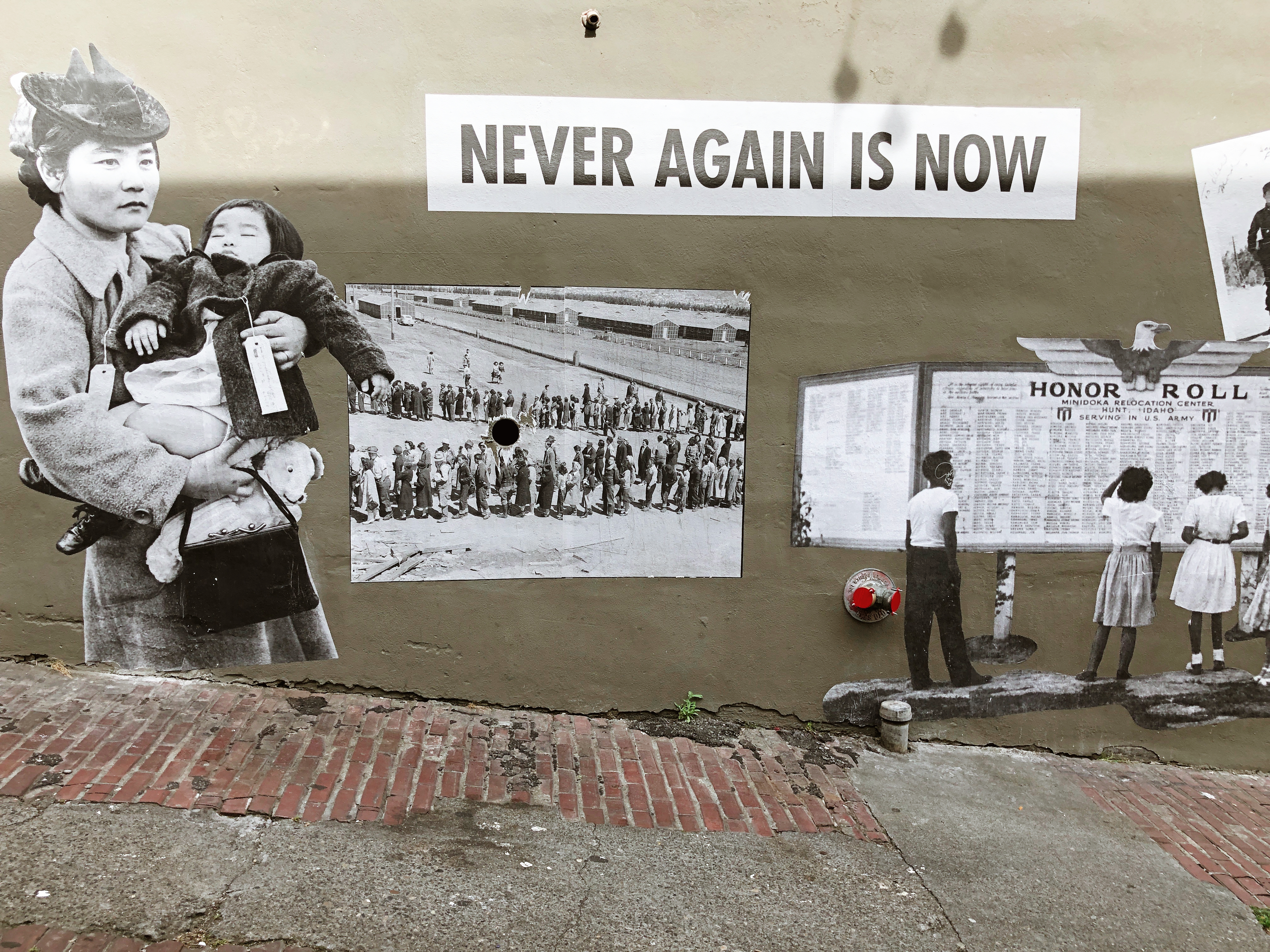Coping with the Loss of a Vernacular Environment

New American Hotel at 7th Avenue S and S King Street in Seattle, built in 1916.
By Hayden Campbell
Vernacular environments celebrate the everydayness of place. Such environments are often described as invisible or interstitial spaces in the city; those which are not grand or opulent but have rich utility and meaning. Vernacular environments are vital as they are a physical reflection of the community that lives in, and uses, that space. Importantly, historic preservation has expanded from a field focused on patriotic sites and grand architecture to preserving cultural landscapes and sites that embody the intangible heritage of underrepresented communities. This evolution demonstrates the field’s capacity to connect historic preservation with cultural histories at the local level and develop a more diverse collection of historic sites. Vernacular environments have the potential to do just that: tell the story of everyday space and preserve socially complex structures that have meaning to vulnerable communities. Vernacular spaces capture what is common and make it into something authentic that we now long for in the modern built fabric of cities.
Historic preservation practices are often at odds with social justice and equity as preservation can be an act of cultural marginalization. Jonathan Bell, in his writings about the politics of preservation, says that a dominant interpretation of a heritage site can overwhelm other interpretations integral to the layered significance of a place (Bell, The Politics of Preservation: Privileging One Heritage Over Another, 2013). The end result is that the minority or alternative interpretation is forgotten, and the minority group becomes disempowered and excluded from the heritage of that space. These marginalizing forces have been at work in Seattle’s Chinatown-International District for more than a century, and because of that its vernacular fabric is vulnerable to erosion and erasure. Vernacular environments are inextricably linked with intangible heritage in the sense that vernacular spaces are born from the context of their environments. Taking the historic context of the district into consideration, there were major social and physical disruptions that impacted the neighborhood nearly every decade. Beginning with the Jackson Street regrade which physically formed the land in 1909, to the internment of the Japanese community in 1942, and then finally the construction of Interstate 5 which tore through the core of the district in 1965. Seattle’s Chinatown-International District is a historically contested space, a battleground of urban renewal and transit infrastructure projects. In 1986, the Seattle Chinatown-International District was added to the National Register of Historic Places, cementing its urban form as we know it today.
One year after Interstate 5 was constructed, the National Historic Preservation Act of 1966 was passed, somewhat in recognition of the damage that urban renewal was causing to the historic urban form of American cities. In Lawrence Kreisman’s 1986 National Register of Historic Places nomination, he writes that “The International District lost nearly 40 hotels and its population dropped substantially (from 5,000 to 1,300) between 1950 and 1978 during a period of highway construction, urban renewal, and general economic decline in the area” (Kreisman, 1986). One such hotel was the Tacoma Hotel which was a four-story single room occupancy (SRO) hotel built of stone, concrete, or cement block construction on the corner of 8th Ave S and Jackson St. The SRO typology is notable in this district as they make up 26 of the 42 contributing buildings in the Seattle Chinatown Historic District (Kreisman, 1986).
Taking stock of the individual buildings lost, it may not seem like any significant historical structures were lost, but that is the essence of the vernacular environment. This was a mixed-use neighborhood which had a variety of industrial, commercial, and residential structures that added to the richness and complexity of the space. Moreover, it is the accumulated loss of neighborhood fabric and community that is so damaging and irreversible. Author John B. Jackson suggests that “The contemporary way to study the vernacular dwelling is to see it not as an autonomous realm but as a structure which achieves completeness by relating to its environment” (Jackson, A Sense of Place, A Sense of Time, 1994). That is precisely what was taken from the Chinatown-International District as a result of the construction of Interstate 5. The district lost its original neighborhood context and had a hard edge constructed through it. That boundary conceals more than a century of neighborhood fabric and has stymied any future growth that the district may have enjoyed.
In practice, built heritage preservation can be problematic, resulting in displacement and cleansed urban environments. Jennifer Minner, Professor of City and Regional Planning at Cornell University, writes that “preservation and renewal of historic buildings, districts, and landscapes affirm the continuity and evolution of urban society” (Minner, Revealing Synergies, Tensions and Silences Between Preservation and Planning, 2016). This dialogue has the power to connect generations of residents through the shared experience of the built environment. Coexisting with a historic urban fabric reinforces place attachment and captures the layered meaning of that space added over time. There is an innate friction that occurs between equity, economy, and the environment which often benefits economy (Minner, 2016). Oppositional economic forces manifest in the built environment in the form of gentrification and redevelopment, each of which can negatively impact the existing community by acting as forces of displacement. As a response to these economic pressures, Minner contends that community surveys that include the public in the process of identifying historic assets can capture more sites that represent minority history. Public interaction with preservation practices will be essential if equity, economy, and environment are meant to coexist in the field of historic preservation.

NP Hotel on 6th Avenue S in Seattle, adjacent to the Panama Hotel, built in 1914

Nihonmachi Alley on the north side of Jackson Street between 6th and Maryland Avenues in Seattle. Mural work by Erin Shigaki

